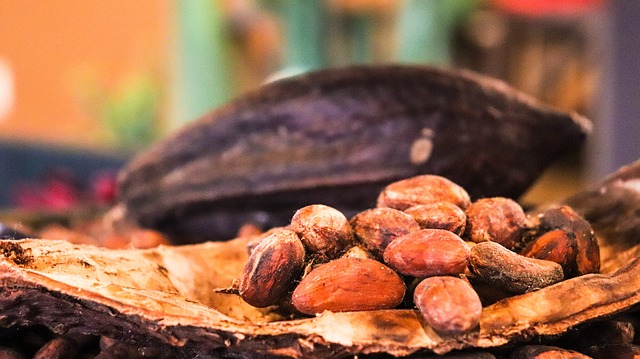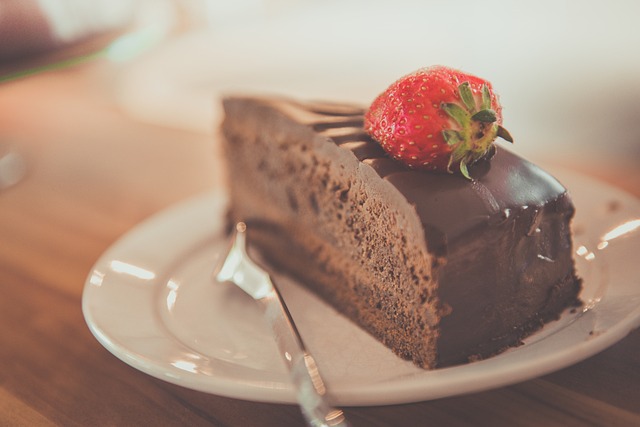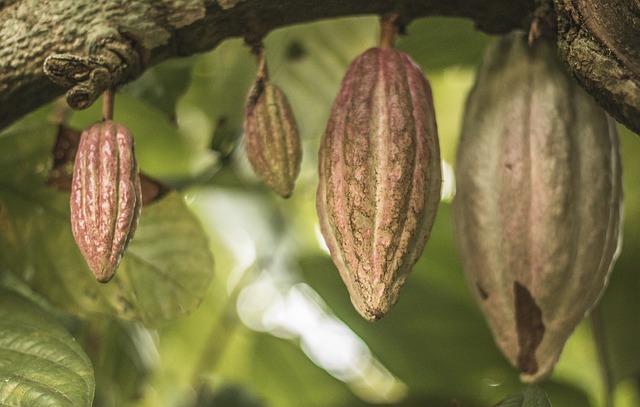The Historical and Culinary Importance of Cacao Beans
Historical Significance
Cacao beans have shaped cultures and cuisines for thousands of years. Their origins and usage span ancient civilizations and global trade routes.
- Origins: First domesticated over 5,000 years ago by the Mayo-Chinchipe culture in present-day Ecuador.
- Mesoamerican Rituals: The Maya and Aztecs used cacao as a sacred drink, often mixed with spices and consumed during religious ceremonies.
- Cacao as Currency: In Aztec society, cacao beans were highly valued and used as currency to trade for food, clothes, and services.
- European Arrival: Spanish explorers brought cacao to Europe in the 16th century, where it became a luxury commodity consumed as a sweetened beverage.
- Evolution: By the 19th century, cacao transformed into chocolate bars and confections, becoming a global culinary staple.
Culinary Uses of Cacao Beans
Cacao beans are incredibly versatile, finding their place in both traditional and modern recipes.
- Ancient Beverages: In Mesoamerica, cacao was used to make a frothy, unsweetened drink combined with water and chili.
- Mole Sauces: In Mexican cuisine, cacao is a key ingredient in mole, a savory sauce that balances sweet, spicy, and earthy flavors.
- Modern Chocolate: Cacao is processed into cocoa powder, butter, and chocolate, forming the foundation of desserts like cakes and truffles.
- Savory Applications: Chefs use cacao in marinades and rubs for meats, enhancing depth and complexity.
- Raw Cacao Nibs: These minimally processed cacao pieces are now popular in health-conscious diets as snacks or toppings.
Global Impact of Cacao
The journey of cacao beans highlights their cultural, economic, and culinary significance.
- Trade and Economy: During the colonial period, cacao became a major cash crop, particularly in West Africa, which still produces about 70% of the world’s supply.
- Cultural Symbolism: Revered by ancient civilizations, cacao represented wealth, divinity, and power.
- Culinary Innovation: Over time, cacao transitioned from a sacred drink to an essential ingredient in sweet and savory dishes worldwide.
Cacao beans remain a powerful connection between ancient traditions and modern gastronomy, offering a blend of rich history and culinary creativity.
Selecting Cacao Beans
Before using cacao beans, it’s essential to select high-quality beans that will provide the best flavor and aroma. The origin of the beans also plays a significant role in determining their taste profile.
| Tip/Note | Description |
|---|---|
| Quality Indicators | Look for beans that are evenly sized, have a consistent color, and emit a rich, deep aroma. Avoid beans that are cracked, moldy, or have an off-putting smell. |
| Origin Matters | The flavor profile of cacao beans varies depending on their origin. For example, beans from Madagascar often have fruity notes, while those from Ghana are more robust and earthy. |

Storing Cacao Beans and Chocolate
Proper storage of cacao beans and chocolate is crucial to maintain their quality over time. Temperature and packaging are key factors to consider.
| Tip/Note | Description |
|---|---|
| Temperature Control | Store cacao beans and chocolate in a cool, dry place, ideally between 60-70°F (15-21°C). Avoid refrigeration, as it can cause condensation and affect texture. |
| Proper Packaging | Keep cacao beans in airtight containers to protect them from moisture and odors. For chocolate, wrap tightly in foil or plastic, and then place in a sealed container. |
Using Cacao Beans
Cacao beans require careful preparation to unlock their full flavor potential. Roasting and grinding are essential steps in this process.

| Tip/Note | Description |
|---|---|
| Roasting | Roasting cacao beans enhances their flavor. Roast at 250-300°F (120-150°C) for 20-30 minutes, shaking the pan occasionally to ensure even roasting. |
| Grinding | After roasting, crack open the beans to remove the husks. Grind the nibs into a paste for use in recipes or further process into chocolate. |
Cooking with Chocolate
When cooking with chocolate, it’s important to handle it correctly to preserve its quality and enhance the flavors in your recipes. Pairing chocolate with other ingredients can also elevate your dishes.
| Tip/Note | Description |
|---|---|
| Melting Tips | Melt chocolate slowly using a double boiler or in the microwave at low power. Stir frequently to prevent burning and ensure smooth consistency. |
| Pairing Flavors | Chocolate pairs well with a variety of flavors, including nuts, fruits, spices, and even savory ingredients like chili or sea salt. Experiment to find your favorite combinations. |

Health Considerations
While chocolate has various health benefits, especially dark chocolate, it’s essential to consume it mindfully. The ingredients you choose also impact its healthiness.
| Tip/Note | Description |
|---|---|
| Moderation is Key | While chocolate, especially dark chocolate, has health benefits, it is also calorie-dense. Enjoy it in moderation as part of a balanced diet. |
| Check Ingredients | When buying chocolate, choose products with high cacao content and minimal added sugars or artificial ingredients for the best health benefits. |
Notes on Ethical Consumption
Ethical consumption of cacao and chocolate products ensures that your choices support fair labor practices and sustainable farming, which benefits both people and the planet.
| Tip/Note | Description |
|---|---|
| Fair Trade | Look for chocolate and cacao products that are certified Fair Trade, which ensures that the farmers who produce the cacao are paid fairly and work in good conditions. |
| Sustainability | Support brands that prioritize sustainable farming practices, as cacao farming can impact the environment. Sustainable practices help protect rainforests and support biodiversity. |

Bioactive Components in Chocolate
Health Benefits of Chocolate
Chocolate contains a variety of bioactive compounds, primarily derived from cacao, that contribute to its potential health benefits. These compounds include:
- Flavonoids: Powerful antioxidants that improve heart health by reducing inflammation and enhancing blood flow.
- Theobromine: A mild stimulant that supports mood and energy levels while promoting mental focus.
- Phenylethylamine (PEA): Known as the “love chemical,” it can boost feelings of happiness and pleasure.
- Magnesium: Found in significant amounts, supporting muscle and nerve function and reducing stress.
- Caffeine: Provides a gentle energy boost.
Regular consumption of moderate amounts of dark chocolate (with a high cacao percentage) has been linked to improved cardiovascular health, reduced blood pressure, and enhanced cognitive performance.
Health Benefits of Cacao Beans
Cacao beans, the raw form of chocolate, are a superfood packed with nutrients and health-promoting compounds:
- Rich in Antioxidants: Cacao beans contain polyphenols that fight oxidative stress and reduce the risk of chronic diseases.
- High in Fiber: Supports digestive health by promoting gut-friendly bacteria.
- Mood Enhancer: Contains compounds like anandamide, which is often referred to as the “bliss molecule,” enhancing feelings of happiness.
- Lowers Cholesterol: Cacao helps in lowering bad cholesterol (LDL) and raising good cholesterol (HDL).
- Anti-inflammatory: Reduces inflammation, supporting overall health and potentially aiding in recovery after physical exertion.
Chocolate Desserts, Drinks, and Pastries Around the World
| Dish/Drink | Region of Origin | Ethnic or Cultural Significance |
|---|---|---|
| Mole (Chocolate Sauce) | Mexico | Used in traditional Mexican cuisine, often for special occasions. |
| Hot Chocolate (Chocolatl) | Mesoamerica | Ancient Aztecs and Mayans consumed it as a sacred, frothy, unsweetened drink. |
| Chocolate Lava Cake | United States/France | A modern dessert highlighting the indulgence of molten chocolate. |
| Sachertorte | Austria | A famous chocolate cake created in Vienna, rich in cultural history. |
| Brownies | United States | A staple dessert in American cuisine, easy to make and versatile. |
| Chocolate Truffles | Belgium | A luxurious chocolate confection symbolizing Belgian chocolate heritage. |
| Churros with Chocolate | Spain | A popular snack or breakfast item, traditionally enjoyed with thick hot chocolate. |
| Chocolate Fondue | Switzerland | A communal dessert showcasing the love for Swiss chocolate. |
| Brigadeiros | Brazil | A traditional Brazilian treat made for birthdays and celebrations. |
| Cacao Paste Drinks | West Africa | Used in rituals and ceremonies, emphasizing cacao’s spiritual importance. |
| Tsokolate | Philippines | A hot chocolate drink prepared using cacao tablets (tablea) in Filipino culture. |
| Xocolatl | Central America | A historical unsweetened cacao drink consumed for its energizing properties. |

